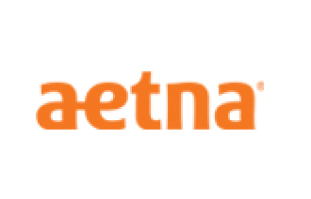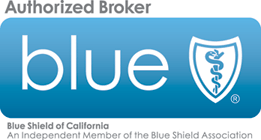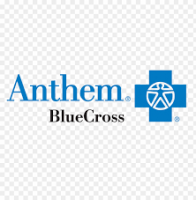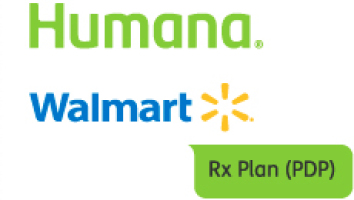MEDICARE ADVANTAGE
Medicare Advantage (MA) plans, sometimes called Part C, do not replace Medicare, but pay instead of Medicare. Enrolling in a MA or MAPD (Medicare Advantage with Part D included) is very much like assigning your Medicare benefits to an insurance company.
HOW THEY WORK
An insurance company contracts with the Centers for Medicare and Medicaid Services (CMS) to administer Parts A, B, and Part D Rx coverage of Medicare in specific geographical service areas. An Advantage plan may deliver services as an HMO (Health Maintenance Organization model), PPO (Preferred Provider Organization), Private Fee for Service (PFFS), Special Needs Plan, or MSA (Medical Saving Account). The plans I represent are HMO, or HMO/PPO with Part D included (MAPD or MAPD/PPO). Although MA HMO plans without Part D are available, it is best to include Part D with your Medicare Advantage plan (MAPD). MAPD plans with a PPO option are offered only in certain zip codes at additional premiums. MAPD monthly premiums range from -0- to over $100- depending on the service area zip code and if a PPO option is available and selected. The Part D Rx part included in a MAPD plan is a fixed benefit with usually only one formulary (list of covered drugs) available.
CHOICES
If a Medicare Advantage plan with Part D Rx included is at -0- premium, why enroll in a Medicare supplement Medigap alphabet plan (A, G, N, etc.)?
1. To protect your insurability. On the hierarchy of plans, Plan G would rank higher in benefits compared to Plan A, and all would be considered richer than a Medicare Advantage HMO plan. But it is not an accurate comparison, because if you drop an MA (Medicare Advantage) plan, you return to Original Medicare. With a Medicare supplement Medigap policy, you never leave original Medicare. You must prove your insurability if you want to apply for a Medigap alphabet plan, unless you have a special enrollment period (SEP). For instance, an insurance company leaves Medicare, drops the plan, or you move out of the plan’s service area, or when you are in your Initial Enrollment Period (IEP).
2. Drug Formulary. With a Medigap alphabet plan, your prescription drug Part D coverage will be in a separate stand-alone policy. You have the option to select the Part D plan which meets your medication needs within your budget. Medicare Advantage plans with Part D included contain a formulary which may or may not meet your needs.
3. Government regulations. MAPD plan’s benefits and premiums increase because the MA is paying instead of Medicare. You can return to Original Medicare (Parts A and B), but you lose your Medicare Advantage benefits as a form or supplemental coverage. With a Medigap plan, you can move to another alphabet plan of equal or lesser value in order to reduce premiums, if necessary. Or, enroll in a Medicare Advantage plan during the Annual Enrollment Period (AEP). In other words, you have options.
4. Most MA plans are HMOs. Beginning in 2013, Medical Loss Ratio (MLR) rules and frozen benefit levels will be imposed to control health care costs. Political and economic forces will pressure the government to constrain future benefit/cost ratios because Congress controls Medicare Advantage plans administered by insurance companies. Medigap plans are regulated by the states and supplement parts A and B of Medicare. So, as Social Security Medicare benefits change, a Medigap plan will adjust to meet the gaps in coverage.
5. Echelon tier health care. As more people enroll in Medicare and the uninsured population meet the mandate to get health insurance in 2014, the health care delivery system, (doctors, hospitals, labs, clinics, etc.), will be confronted with greater demand for their services without a commensurate increase in providers. Medigap policyholders will rank higher in the echelon of benefit tiers, because their plans pay providers more for their services-especially Plan F members. Already, some doctors are demanding concierge service fees as a source for additional income to their practice. Medicare Advantage plans are HMOs, and do not have the same financial leverage to pay healthcare providers if the government reduces the monthly fees paid to insurance companies for plan administration.
SO, WHY ENROLL IN A MEDICARE ADVANTAGE PLAN?
1. -0- dollar premium, or at least lower premiums. A Medigap plan G monthly premium could be $150- or more at age 65, and will increase with age. Part D Rx monthly premiums range from about $15- to over $100-, depending on formulary and coverage selected (see Part D discussion). As you age, Medigap premiums and Part D Rx premiums will increase. Medicare Advantage plans with Part D included (MAPD) premiums start at -0- and go up to the over $100- range depending on your zip code and if the PPO option is selected.
2. If your doctors, specialists, and hospitals, are listed as providers, and your medications are covered in the formulary on the MAPD or MAPD/PPO plan, Medicare Advantage total premium costs are going to be much less compared to the costs for a Medigap policy combined with the costs for a Part D Rx plan. The MAPD premium could be from -0- to the $100+ range. You would continue to pay the Part B premium with a Medigap or Medicare Advantage plan.
3. You have a voice. While it is true political and economic forces will coalesce to control Medicare Advantage plan costs, the same forces will apply to all of Medicare and U.S. healthcare inflation. You have a voice and a vote in the political system which regulates CMS (Centers for Medicare and Medicaid Services) making healthcare funding decisions. You have more power over a Medicare Advantage plan’s administration and services because it pays instead of Medicare. A Medigap plan can only respond to what Medicare pays because it is a private supplemental contract regulated by the states.
I represent Aetna, Anthem Blue Cross, Blue Shield of California and Humana Medicare Advantage plans, along with Silverscript (CVS/Caremark) Part D Rx plan.
Click here to get help in selecting a Medicare Advantage, Medigap, or Part D Rx plan to help meet your financial healthcare security needs.
Rates quoted are estimates. Premiums and effective dates are determined by the insurance company and the Centers for Medicare and Medicaid Services (CMS).
Remember to include dental as an additional feature provided by the insurance company of your choice. Or, click here for a dental quote.






